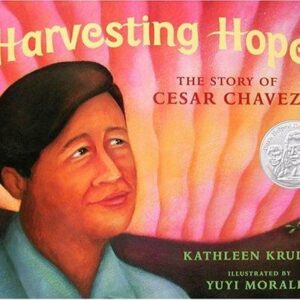In the Company of Radical Women Writers
$24.95
| Title | Range | Discount |
|---|---|---|
| Trade Discount | 5 + | 25% |
- Description
- Additional information
Description
Recovering the bold voices and audacious lives of women who confronted capitalist society’s failures and injustices in the 1930s—a decade unnervingly similar to our own In the Company of Radical Women Writers rediscovers the political commitments and passionate advocacy of seven writers—Black, Jewish, and white—who as young women turned to communism around the Great Depression and, over decades of national crisis, spoke to issues of labor, land, and love in ways that provide urgent, thought-provoking guidance for today. Rosemary Hennessy spotlights the courageous lives of women who confronted similar challenges to those we still face: exhausting and unfair labor practices, unrelenting racial injustice, and environmental devastation.As Hennessy brilliantly shows, the documentary journalism and creative and biographical writings of Marvel Cooke, Louise Thompson Patterson, Claudia Jones, Alice Childress, Josephine Herbst, Meridel Le Sueur, and Muriel Rukeyser recognized that life is sustained across a web of dependencies that we each have a duty to maintain. Their work brought into sharp focus the value and dignity of Black women’s domestic work, confronted the destructive myths of land exploitation and white supremacy, and explored ways of knowing attuned to a life-giving erotic energy that spans bodies and relations. In doing so, they also expanded the scope of American communism.By tracing the attention these seven women pay to “life-making” as the relations supporting survival and wellbeing—from Harlem to the American South and Midwest—In the Company of Radical Women Writers reveals their groundbreaking reconceptions of the political and provides bracing inspiration in the ongoing fight for justice.
Rosemary Hennessy is L. H. Favrot Professor of Humanities and professor of English at Rice University. She is author of three other books, including Fires on the Border (Minnesota, 2013).
ContentsIntroduction: How Did Fast Food Become Black?Part I. White Utopias1. A Fortress of Whiteness: First-Generation Fast Food in the Early Twentieth Century2. Inharmonious Food Groups: Burger Chateaux, Chicken Shacks, and Urban Renewal’s Attack on the Existential Threat of Blackness3. Suburbs and Sundown Towns: The Rise of Second-Generation Fast Food4. Freedom from Panic: American Myth and the Untenability of Black Space5. Delinquents, Disorder, and Death: Racial Violence and Fast Food’s Growing Disrepute at MidcenturyPart II. Racial Turnover6. How Does It Feel to Be a Problem? (Mis)Managing Racial Change and the Advent of Black Operators7. To Banish, Boycott, or Bash? Moderates and Militants Clash in Cleveland8. Government Burgers: Federal Financing of Fast Food in the Ghetto9. You’ve Got to Be In: Black Franchisors and Black Economic PowerPart III. Black Catastrophe10. Blaxploitation: Fast Food Stokes a New Urban Logic11. PUSH and Pull: Black Advertising and Racial Covenants Fuel Fast Food Growth12. Ghetto Wars: Fast Food Tussles for Profits amid Sufferation13. Criminal Chicken: Perceptions of Deviant Black Consumption14. 365 Black: A Racial Transformation CompleteConclusion: The Racial CostsAcknowledgmentsNotesIndex
"This truly revelatory work pushes the already rich encounters between contemporary left feminist scholars and 1930s radical women writers in new directions—new ways of thinking and new fields of desire. Beautifully written, it is a model of engaged, compassionate, and grounded activist research."—Paula Rabinowitz, author of American Pulp: How Paperbacks Brought Modernism to Main Street and coeditor of Writing Red: An Anthology of American Women Writers, 1930-1940
Additional information
| Weight | 1 oz |
|---|---|
| Dimensions | 1 × 6 × 9 in |










